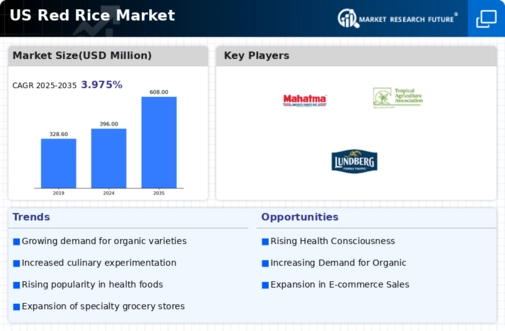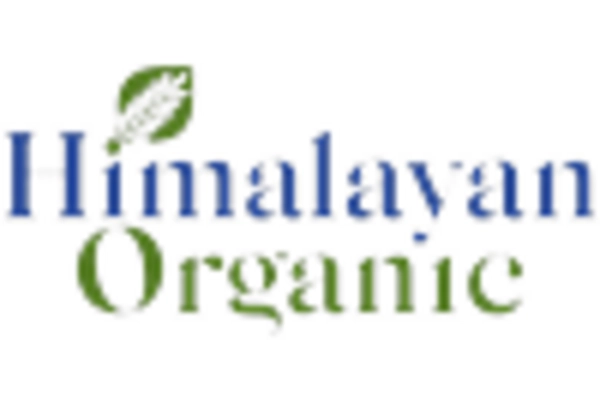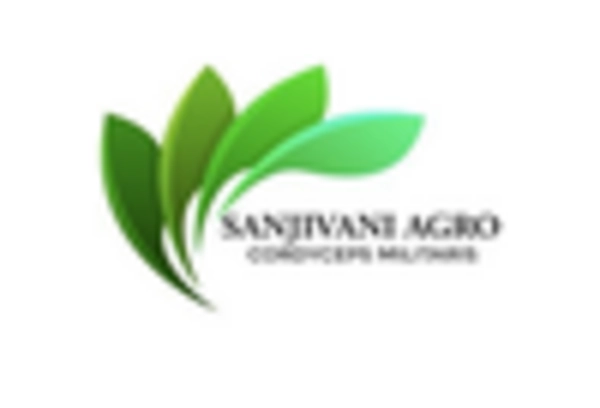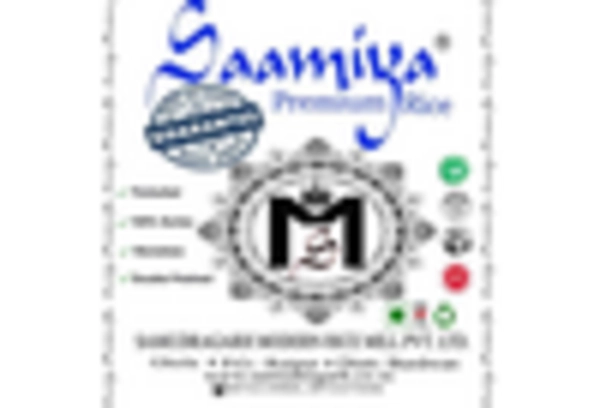Culinary Versatility of Red Rice
The culinary versatility of red rice is another significant driver for the red rice market. Chefs and home cooks alike are increasingly incorporating red rice into a variety of dishes, ranging from salads to stir-fries. Its unique flavor and texture make it an appealing choice for diverse cuisines, which is likely to expand its market presence. The red rice market is benefiting from this trend, as restaurants and food service providers seek to offer innovative menu options that cater to evolving consumer preferences. Additionally, the rise of food blogs and social media platforms has contributed to the popularity of red rice recipes, further driving consumer interest. As culinary trends continue to evolve, the demand for red rice is expected to grow, potentially leading to increased market share.
Nutritional Benefits of Red Rice
The red rice market is experiencing a surge in demand due to the growing awareness of the nutritional benefits associated with red rice. Rich in antioxidants, vitamins, and minerals, red rice is perceived as a healthier alternative to white rice. Studies indicate that red rice contains higher levels of fiber, which aids in digestion and promotes heart health. As consumers increasingly prioritize health and wellness, the market for red rice is projected to grow by approximately 15% annually. This trend is particularly evident in urban areas where health-conscious consumers are willing to pay a premium for nutritious food options. The red rice market is thus likely to benefit from this shift towards healthier eating habits, as more individuals seek to incorporate red rice into their diets.
Increased Awareness of Gluten-Free Options
The red rice market is benefiting from the increased awareness of gluten-free options among consumers. With a growing number of individuals diagnosed with gluten intolerance or celiac disease, there is a heightened demand for gluten-free grains. Red rice, being naturally gluten-free, presents a viable alternative for those seeking to avoid gluten-containing products. Market Research Future indicates that the gluten-free food market is expected to reach $7 billion by 2026, with specialty grains like red rice playing a crucial role in this growth. As more consumers become aware of the health implications of gluten, the red rice market is likely to see a corresponding increase in demand. This trend not only caters to health-conscious individuals but also aligns with the broader movement towards inclusive dietary options.
Sustainability and Organic Farming Practices
The red rice market is also influenced by the rising trend of sustainability and organic farming practices. As consumers become more environmentally conscious, there is a growing preference for products that are cultivated using sustainable methods. Organic red rice, which is grown without synthetic fertilizers or pesticides, is gaining traction among eco-friendly consumers. The market for organic rice in the US has seen a notable increase, with sales reaching approximately $1 billion in recent years. This shift towards organic products is expected to drive the red rice market forward, as more farmers adopt sustainable practices to meet consumer demand. The emphasis on sustainability not only appeals to health-conscious consumers but also aligns with broader environmental goals, potentially enhancing the market's growth prospects.
Rising Disposable Income and Consumer Spending
The red rice market is positively impacted by the rising disposable income and consumer spending in the US. As economic conditions improve, consumers are more willing to invest in premium food products, including specialty grains like red rice. This trend is particularly evident among millennials and Gen Z consumers, who are increasingly seeking high-quality, nutritious food options. Market data suggests that the organic and specialty grain segments are projected to grow by approximately 20% over the next five years. This increase in consumer spending power is likely to drive the red rice market, as more individuals prioritize health and quality in their food choices. The willingness to pay a premium for red rice reflects a broader shift towards mindful consumption.

















Leave a Comment